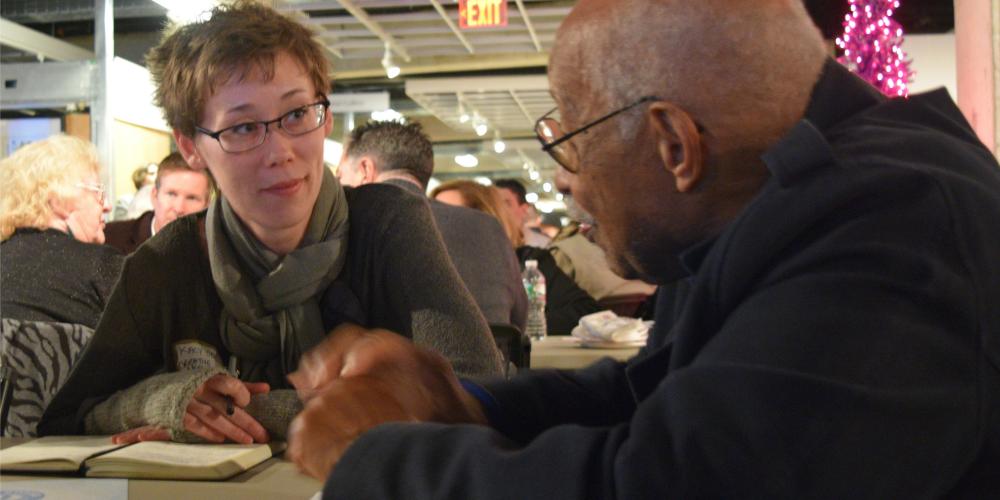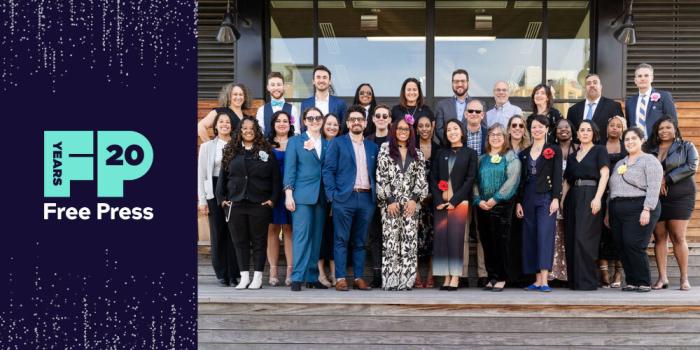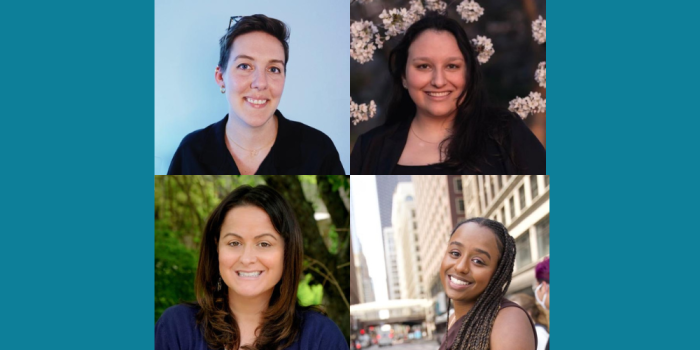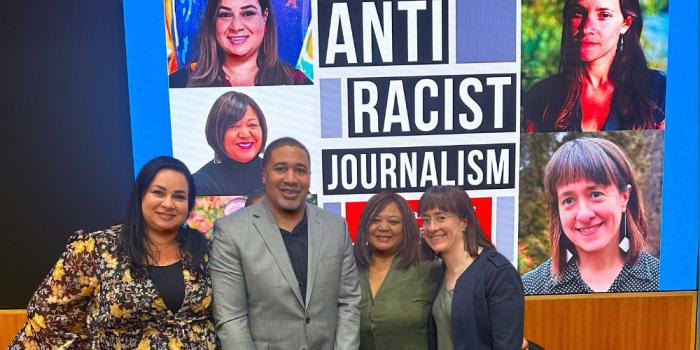Community Voices: Kacy O'Brien

When I first starting working on the News Voices: New Jersey project in 2015, everyone I met asked: “Have you heard of Creative New Jersey? They’re doing great work. You need to meet them.”
I was nervous to reach out to them, especially when launching a new project that felt similar in nature — bringing people together in conversation to spark creative solutions to difficult challenges where they live. Would they respond? Would we be stepping on their toes?
My fears dissolved upon meeting Kacy O’Brien and Elizabeth Murphy of Creative New Jersey. Both were welcoming, supportive and curious, and it became clear that their work was not only having an impact but was complementary, not duplicative. Since then, we’ve worked closely and mutually supported each other’s work.
I spoke with O’Brien, director of programming at Creative New Jersey, about her work with the organization, and what she’s hearing about the role of news and information in the communities she’s working in.
Tell me a little about Creative New Jersey.
In a sentence: Creative New Jersey helps people ignite their own power to make change in their communities.
Our community-engagement work has helped people launch businesses, strengthen nonprofits, activate youth, strengthen relationships between municipalities and their residents, and weave statewide networks.
New Jersey’s communities are struggling because of isolation, lack of trust and decades of inequity.
Through creativity, collaboration and the inclusion of highly diverse groups of people within communities, our engagement program addresses those challenges by creating the opportunity for communities to co-create solutions to the issues they face — where everyone can contribute their ideas, where creative, divergent thinking is encouraged, and where everyone is responsible to each other to make change happen.
We build relationships and activate people’s sense of their own power for collective and collaborative action.
You can see some of the projects that have developed from this way of working in the Impact Stories on our website.
What brought you to this type of work? What’s rewarding? What’s challenging?
The people. Hands down.
Creativity, for us, is about creativity in the broadest sense: creative thinking in the arts, absolutely, and also in tech, health care, education, government, philanthropy, commerce, the social sector — you name it. We all have imagination and we are all inherently creative: Helping unleash the creative thinking that leads to solutions-oriented action is one of the joys of my work.
Some of the most rewarding moments at Creative New Jersey are when all of the wonderful, diverse, passionate and committed people at our Calls to Collaboration (our two-day community-wide gatherings) start to really connect with each other.
When people get excited about solutions they’re developing, when they’re surprised and inspired by the teenagers who are leading breakout sessions just like the CEOs and nonprofit leaders — when they begin to realize that they aren’t alone and that hundreds of other people care about their community and want to work to make it better, too ... there’s a palpable shift in the energy of the room.
What’s challenging? Collaboration is not always a natural impulse — it takes care, attention and time for collaborations to work. It can be challenging, for a whole host of reasons, to set aside the necessary time to sit shoulder to shoulder — particularly with people you may not have ever encountered before — to work on solutions to issues your community faces.
It can be difficult to be really present, to listen, to open up your mind and set aside assumptions when so many things clamor for attention — but when you do it’s amazing what you can accomplish.
When News Voices began in New Jersey, you were one of the first people we reached out to. As one of our earliest allies, I wanted to ask: Why did you decide to partner with News Voices when we were getting it off the ground?
We know that journalism at the local level is absolutely essential — we hear that constantly from our communities. News Voices looks to strengthen relationships between people and local journalists, so we wanted to learn about how you were doing that and what was on the minds of people and journalists alike.
Once we had a chance to meet you and see your work in action, it became clear that we had values and goals in common, and you’ve been fantastic partners and a resource for our communities ever since!
You may hold the record for most-attended News Voices events, outside of Free Press staff. Could you describe what your experience has been like in the room with people talking about news and information?
I need to underscore here how important your work with News Voices is: You’re bringing together communities, journalists and newsrooms in a way that very few other organizations are.
There’s tremendous value in your ability to convene those stakeholders and generate valuable conversations for those involved, so you bet I’m going to come to your events, particularly in communities where our work overlaps.
One thing that has intrigued me at the Free Press events are the assumptions made on both sides about how journalism works. For many people, the processes of journalism are opaque, and so conversations between community members and journalists have helped create a better shared understanding of how local news operates.
It also became apparent to me that because trust in the media has eroded so much over the years, that it is absolutely essential for those relationships to be rebuilt — not just between journalists and residents, but between newsrooms everywhere. If there’s one thing I’ve seen proven over and over in my work with Creative New Jersey, it’s that the more inclusive and collaborative we are, the more successful our solutions and creative ideas are.
Through all the deep-dive work you’re doing in communities around New Jersey, what’s been your sense about perspectives on local news, and the role journalism plays, in communities?
We’ve heard people express that outlets aren’t reporting on issues that matter to them. They often feel that only the bad news gets reported, which leads to misperceptions about their communities.
They are also deeply grateful to the local journalists who work to ensure there’s balance in the news, and they look to these journalists as primary sources for essential information and education on local policy, economic development, social issues and more.
On the flip side, when local journalists participate in the community Calls to Collaboration, or serve as members of our host teams, we often see a new level of relationship that grows as a result.
There’s greater trust between residents and journalists, ease of access, and journalists have commented to us about seeing an increased scope of story angles because of the diversity of people and perspectives they encounter at the Calls to Collaboration.
What have your personal experiences been like with local news?
I have come to rely on local news more as I strive to understand what’s happening in my own community and why — details that regional and national news won’t and can’t cover.
The reporting of local journalists throughout New Jersey is essential to my work because it allows me to have a better understanding of what our communities are going through, what issues they might be wrestling with now, what they’ve wrestled with in the past, and what positive change and progress are being made already.
How can people learn more about and support your work?
The best place to start is our website: creativenj.org, where we have videos from our Calls to Collaboration, information on how to become a Creative Community, the Impact Stories that have been launched in our Creative Communities, and more. Or people can reach out to us directly: info@creativenj.org.





